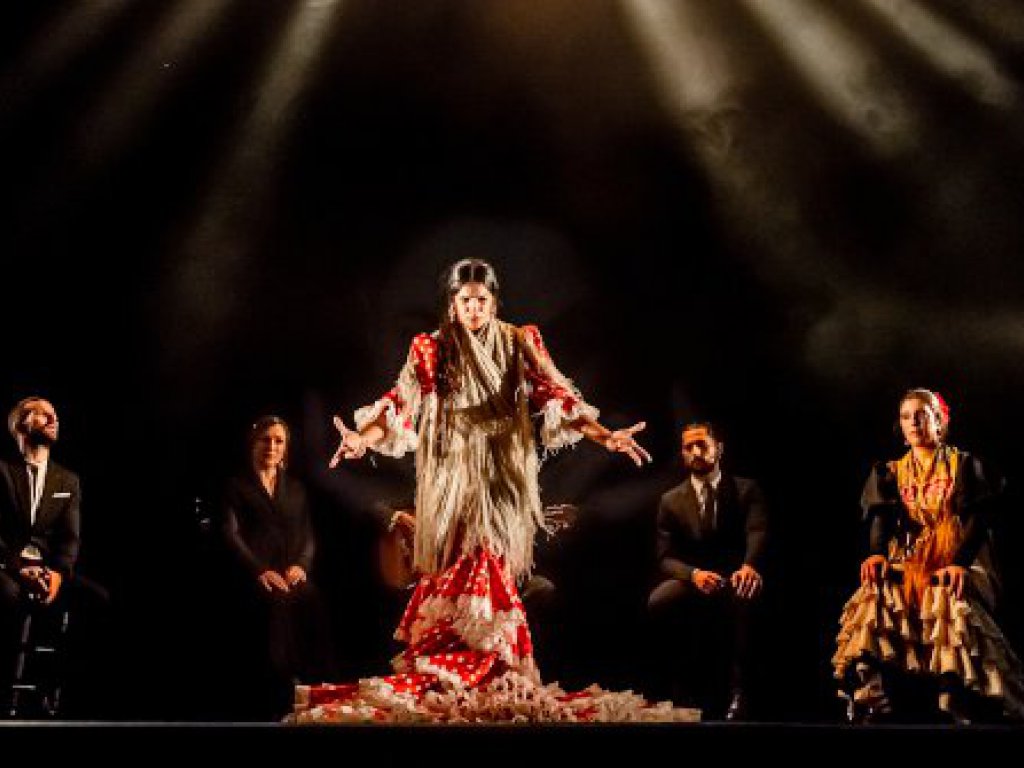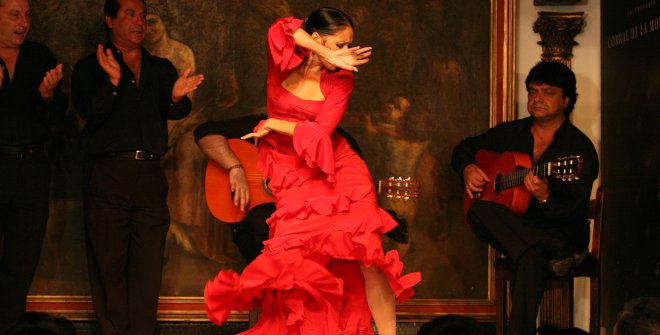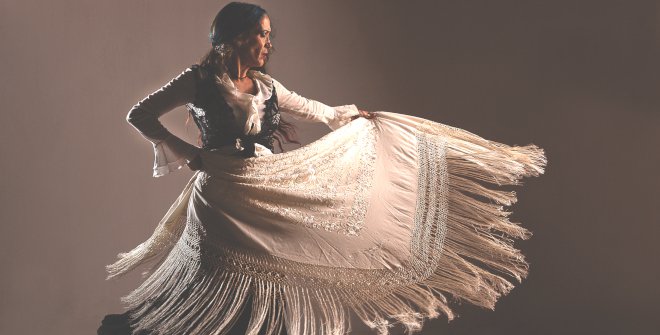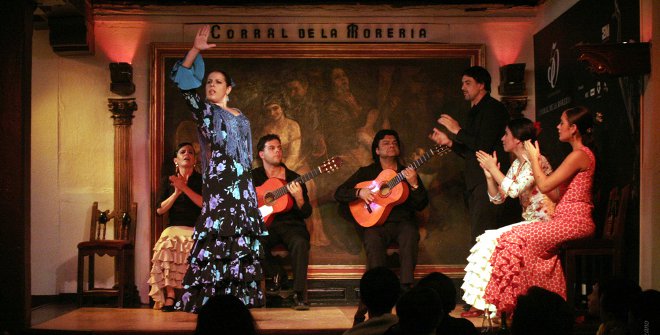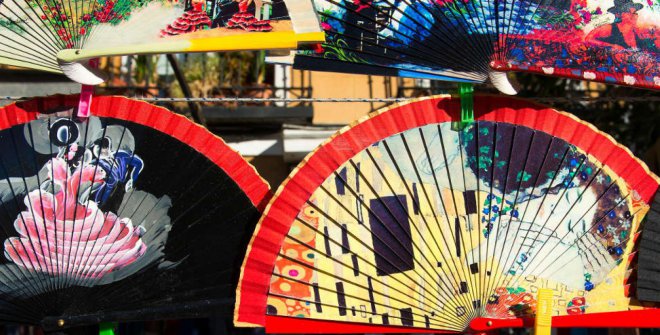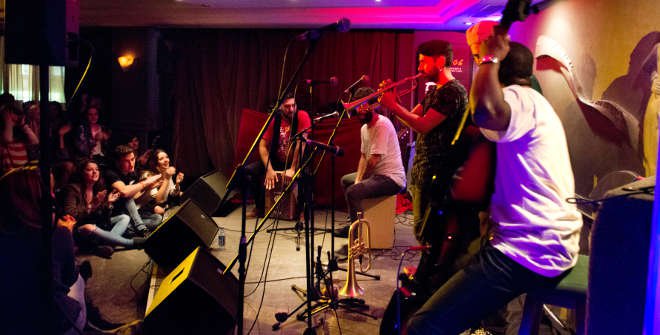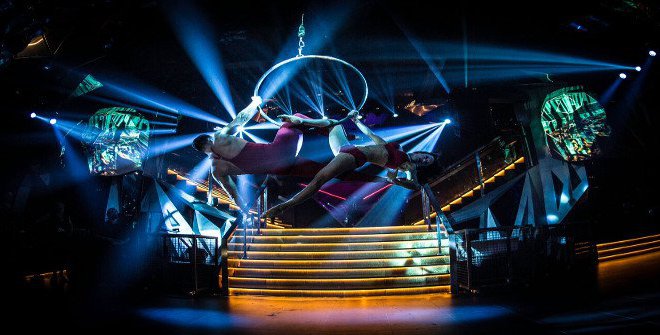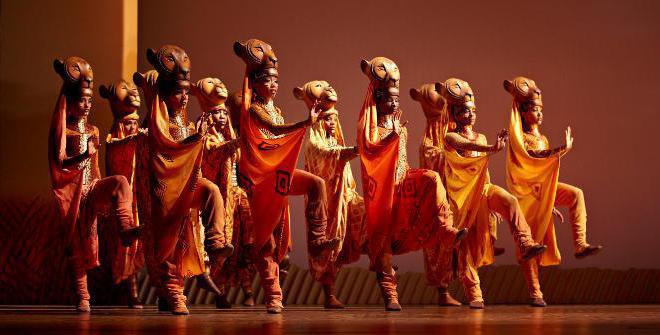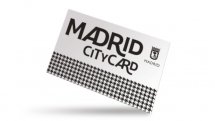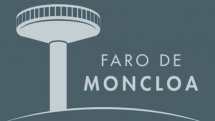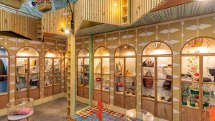Flamenco Passion
Declared an Intangible Cultural Heritage of Humanity by UNESCO, flamenco has become part of Madrid’s way of life thanks to tablaos which are veritable meccas for flamenco song, guitar and dance. In all of these venues, history has been—and continues to be—written. Let the handclaps begin!
Published in esMADRIDmagazine in November 2023
What exactly is duende, a Spanish term the dictionary defines as a “mysterious and indescribable allure”? In the words of the famous poet Federico García Lorca: “It’s a mysterious power everyone feels but that no philosopher can explain. I once heard an old guitar master say ‘Duende is not in the throat; duende rises up inside, from the soles of the feet’. In other words, it’s not a matter of skill but a style that’s truly alive; that is, a matter of blood, of ancient culture, of on-the-spot creation. Duende is a power rather than an act; it’s a fight rather than a thought process”. Although Lorca was referring to any sort of artistic expression, the word—so short and so intangible—has been linked to the art form for centuries. It’s the charisma of an artist taking to the stage, the shivers, goosebumps and excitement aroused in those watching or listening. That’s what duende is, and each and every night it enshrouds the myriad flamenco song, guitar and dance shows in our country.
Inscribed in UNESCO’s List of Intangible Cultural Heritage of Humanity, the art form originated in the 16th century in Andalusia, a land of deep cultural fusion. It didn’t become popular until later, in the 18th century, and even more so in the 19th century, when a plethora of cafés cantantes or “singing cafés” cropped up in many Spanish cities, giving rise to the concept of the professional flamenco singer. Before then, the genre was prevalent in tabernas, inns and very close-knit gatherings. These cafés, which were rooms decorated with velvet, mirrors and bullfighting motifs, were the precursors of the tablaos that exploded onto the social scene in the 20th century. One of the first to open in Madrid is Tablao Flamenco 1911 (No. 15 Plaza de Santa Ana), formerly the legendary Villa Rosa, which is still in operation today. Its new name alludes to the year it was established. Its marvellous tiles have seen all sorts of stories unfold and it has hosted Lola Flores, of course, but also Ernest Hemingway, Ava Gardner and Audrey Hepburn. The space has also been used as a setting for films like Pedro Almodóvar’s High Heels and Fernando Trueba’s The Girl of Your Dreams.
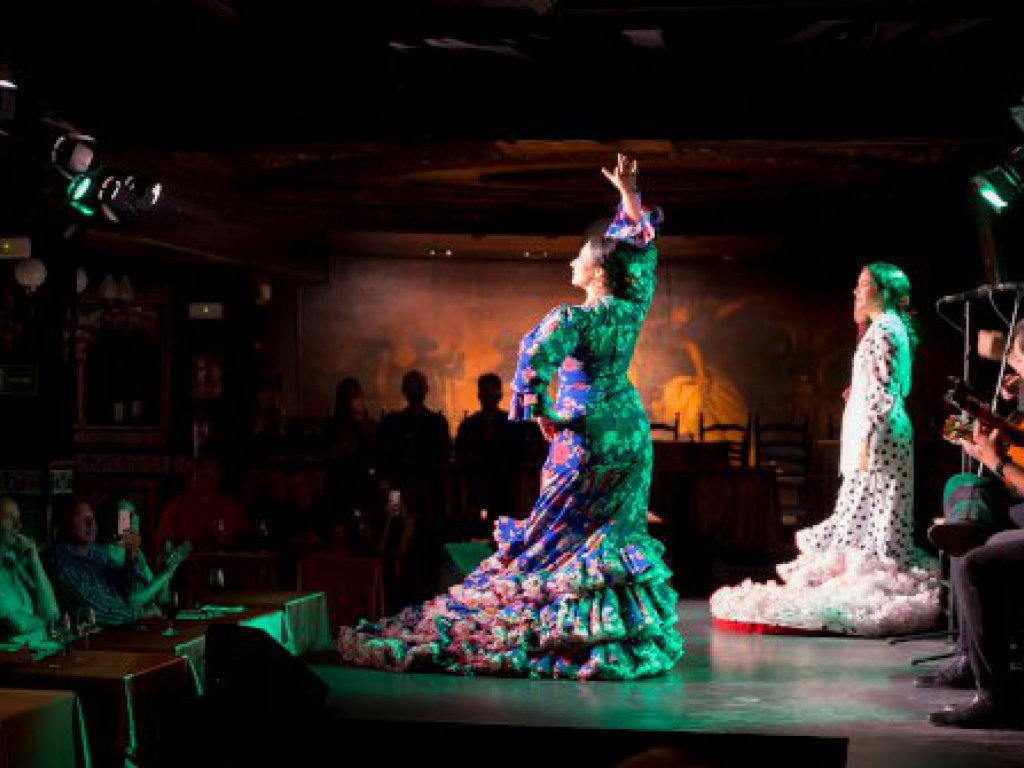
Open since 1956 and named the “World’s Best Flamenco Tablao” at Cante de las Minas International Festival in La Unión, Corral de la Morería (No. 17 Calle de la Morería) is a veritable flamenco mecca known as “the cathedral of the art form”. Its owner, Blanca del Rey, is one of the most important choreographers and dancers in flamenco history. The programme changes each week, as if it were a major theatre, but with the advantage of being able to enjoy an intimate performance by artists who flood top national and international festivals and stages with their thrilling energy. For more than six decades, it has showcased and launched the careers of artists like Antonio Gades, La Chunga, Serranito, Manuela Vargas, El Güito, Mario Maya, La Paquera de Jerez, José Mercé, Pitingo and Antonio Canales, among many others, who have entertained important figures and Hollywood stars. Here’s another interesting fact: it’s the only tablao in the world whose interior holds a Michelin-starred restaurant.
Gastronomy is a key element of Madrid’s tablaos, where you can savour tapas and delicious Spanish food while you enjoy a show. A number of set menus are available at another classic Madrid institution, Torres Bermejas (No. 11 Calle de Mesonero Romanos), founded in 1960. Instagrammers, take note: the venue recreates the interior of the Crimson Towers (Torres Bermejas) of the Alhambra palace in Granada, with walls featuring Arab motifs, tiles and coffered wooden ceilings. It will go down in history as the place where the incomparable singer Camarón de la Isla, who performed there for years, met the brilliant guitarist Paco de Lucía.
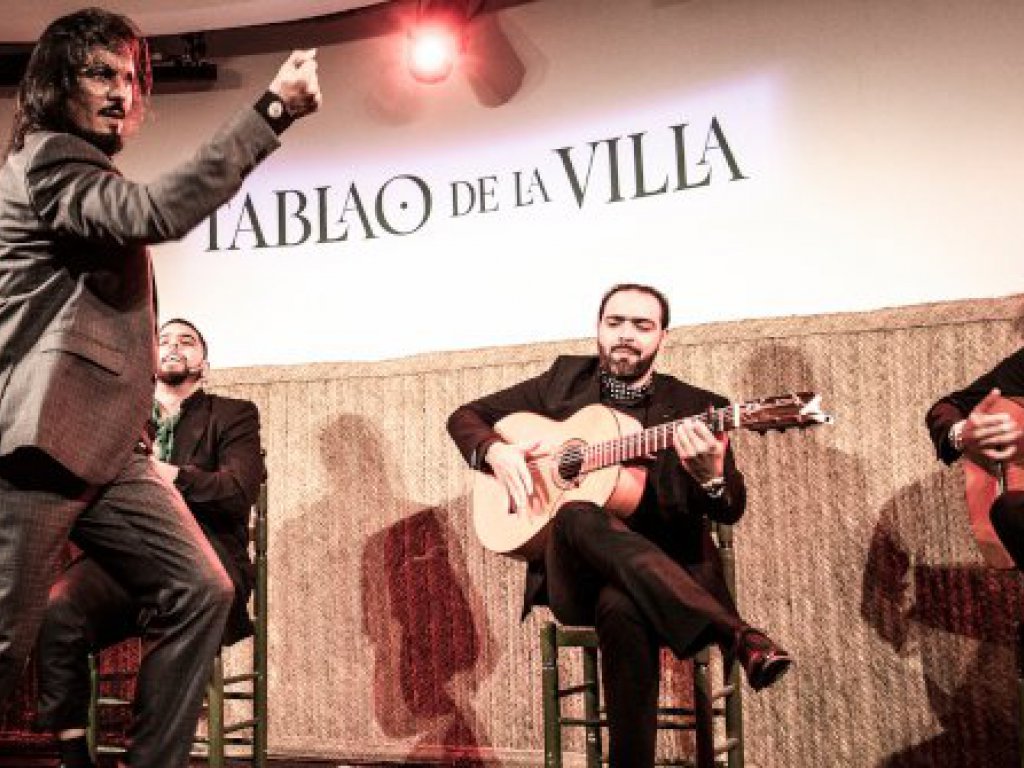
“Our artists’ emotional communication leads to an intensely personal, unforgettable experience for the spectator”, says the management at Cardamomo (No. 15 Calle de Echegaray), which likes to define it not as a tablao but rather a “flamenco house”. Since opening in 1994, it has regularly showcased talented emerging artists who first saw the space as a “rehearsal room” for their new musical explorations, before being welcomed back to its stage as highly acclaimed professionals. Alegrías, bulerías, fandangos, seguiriyas, soleás, tangos and sevillanas are the best-known flamenco palos, or styles, which are sung, danced—oh, that amazing foot tapping!—and played. As for the guitar, there are a range of toques, or rhythmic forms: gypsy, which are deep and charismatic; virtuoso, drawing on a total mastery of technique; simple, with no frills or fanfare; and elegant, which are the liveliest of all. That’s how they describe it at Las Tablas (No. 9 Plaza de España), which has been in business for over 15 years and boasts Madrid’s largest flamenco stage. Other very special performing venues include Las Carboneras (No. 63 Calle Mayor), located on the ground floor of a palace that belonged to the Count of Miranda, Tablao de la Villa (No. 7 Calle de Torija), in a 19th century stately home, La Quimera (No. 7 Calle de Cuchilleros), which has a sala rociera (a room for dancing Sevillanas) that oozes Andalusia, and Café Ziryab (No. 17 Paseo de la Esperanza), whose tables and chairs of varying heights allow the audience to enjoy the show from all angles
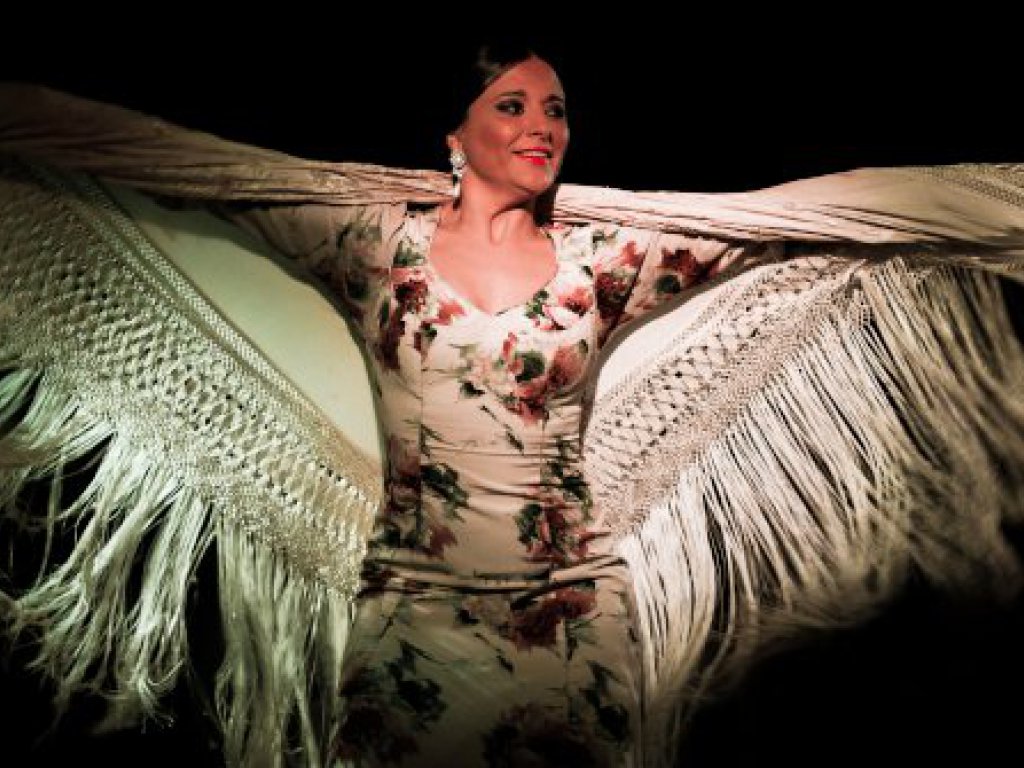
The years pass, but flamenco in the capital continues to find new spaces to serve as hubs that promote this world-famous art form. Examples include Flamenco de Madrid Cultural Centre (No. 6 Calle del Conde de Xiquena), Temple (No. 40 Cuesta de San Vicente), La Carmela (No. 4 Calle de la Victoria), Torero (No. 26 Calle de la Cruz), Los Porches (No. 2 Calle de Timoteo Pérez Rubio) and Flamenco de Leones (No. 4 Plaza de la Independencia), which has good food, great cocktails and fantastic shows next to Puerta de Alcalá gate.
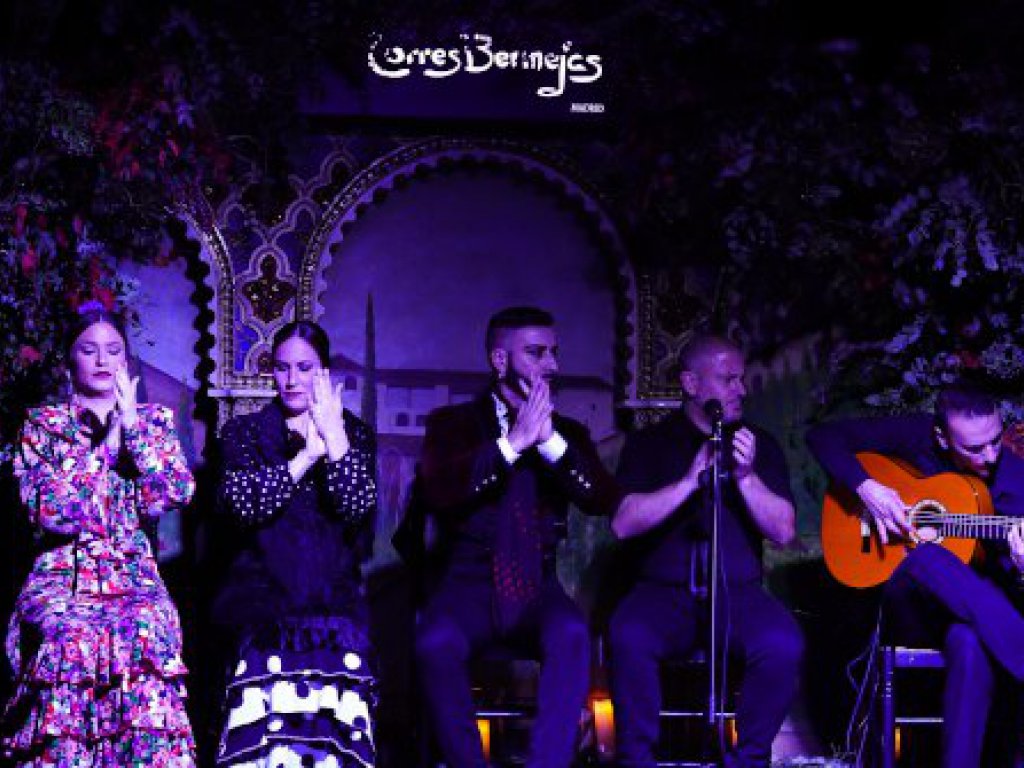
Beyond tablaos
It’s always been said that to make it in flamenco, you have to come to Madrid. Our city has numerous tablaos, festivals like Flamenco Madrid and Suma Flamenca, and schools like Amor de Dios and El Lucero, but also other places in which to enjoy the genre such as the world’s first flamenco theatre, Teatro Flamenco Madrid (No. 10 Calle del Pez), where you can see the show Emociones every day of the year. As part of its series Flamenco Real, the capital’s premier music venue Teatro Real opera house (Plaza de Isabel II) holds concerts and recitals every month featuring big names in flamenco song, guitar and dance. In September, El Teatro Magno (No. 7 Calle de Cedaceros) welcomed the arrival of Jaleos Jondos, a contemporary flamenco spectacle directed by Daniele Finzi Pasca, who was behind some of Cirque du Soleil’s biggest shows.
